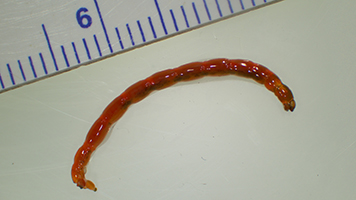PFAs and Hypoxia in The Great Lakes
Principal Investigator(s): Dr. Paris Collingsworth

Researchers

Paris Collingsworth, Research Associate Professor
Purdue FNR & Great Lakes Environmental National Program (GLNPO)
Research Objectives
Hypoxia (< 2.5 ppm dissolved oxygen, DO) is an increasingly common seasonal phenomenon in Lakes Huron and Erie. Hypoxia is of particular importance in benthic organisms that live in deep areas likely affected by low oxygen conditions. We know little about insect exposure to PFAS, and in particular, insects that have biphasic aquatic-terrestrial life cycles. A great example of this ecologically important group of insects are the benthic communities of nonbiting midges, which live in direct contact with the final repository of PFAS, sediments, and move to terrestrial environments after hatching serving as prey for birds. The hemoglobin (Hb) system of midges as a way to assess the physiological impacts of hypoxia and PFAS. The great majority of proteins in the hemolymph of midges are extracellular Hbs and their red body color is related to Hb content. Therefore, these invertebrates could serve as excellent models for detecting the presence and effects of PFAS and hypoxia. The ultimate goal of our research is to predict the combined ecological effects of two common environmental stressors in the Great Lakes: PFAS and hypoxia. We will test the overarching hypothesis that changes in Hb content of midges can be used as a tractable and sensitive physiological signal for detecting the presence of PFAS and hypoxic conditions.
- Hypoxia is a major stressor in the Great Lakes
- PFAS are another stressor in aquatic organisms
- Conducting paired field and laboratory experiments evaluating responses at different levels of organization
- Animal model: Chironomus dilotus and C. spp.


